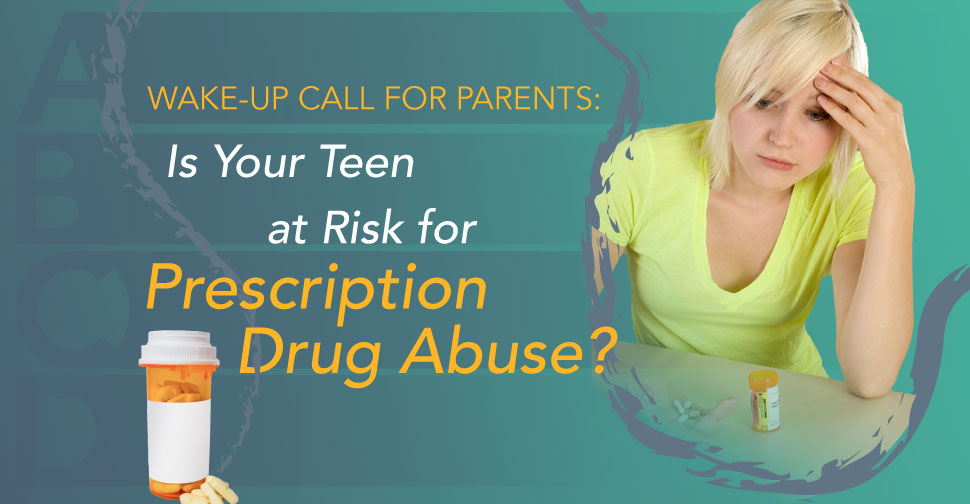Teenagers who are prescribed medications for anxiety or sleep disorders are at high risk of abusing those drugs — often by using someone else’s medication to get high or relax when their own prescription runs out, according to a study from the University of Michigan.
The three-year study, published in the journal Psychology of Addictive Behaviors, is based on 2,745 surveys of adolescents in the Detroit metro area from 2009 to 2012.
Compared to teenagers who never received a prescription:
- Teens who were given a legal prescription for anti-anxiety medication (i.e., Xanax, Valium) during the study period were nine times more likely to illegally misuse the medication (typically by using someone else’s) one to two years later.
- Teens who were given a legal prescription for sleep medication (i.e., Ambien, Lunesta) during the study period were six times more likely to illegally misuse the medication one to two years later.
- Teens who had a legal prescription for anti-anxiety medication before the study (but no longer had a current prescription) were 12 times more likely to illegally misuse the medication.
“We found that there is a future risk associated with a teen being prescribed an anti-anxiety or sleep medication,” says Carol Boyd, Ph.D., a professor at the University of Michigan who led the study. “Although these medications are efficacious and improve the lives of many people, parents need to be aware of their abuse potential.”
As central nervous system depressants, sleep and anti-anxiety medications can help a person rest, or ease a panic attack. These drugs can also be addictive, and in high doses can cause slurred speech, dizziness, confusion and loss of memory – and heart and lung distress, especially during withdrawal or when used in conjunction with alcohol.
Most of the teens in Boyd’s study came from well-educated families; 80 percent had at least one parent with a college degree or higher. White students were two times more likely to use another person’s sleep or anti-anxiety medication than African American students, according to the study. Female students, and teens with higher levels of anxiety and depression, were also more likely to abuse prescription drugs.
An estimated nine percent of the study participants had been prescribed sleep or anti-anxiety medication at some point in their lives. During the study, about three percent of the participants had a current prescription.
“These medications produce sensations (e.g., drowsiness, relaxation) that many youth seek,” Boyd notes. “Our data show that once an adolescent has been medically exposed to these medications (with a legal prescription), many later seek them out illegally.”
Teens have two primary motivations to abuse drugs, Boyd says: to self-treat their own sleeplessness or anxiety symptoms, or to experiment by seeking a euphoric high or other sensations. That pattern can lead to additional health dangers.
“Our other studies show that adolescents who endorse sensation-seeking motivations are much more likely to abuse other illicit drugs and binge drink,” Boyd says. “In another study, we found that youth who engage in non-medical use of pain medication for sensation-seeking motivations are at higher odds of engaging in all types of problem behaviors (early sex, gambling) compared to youth who engage in non-medical use to self-treat.”
Among all Americans, prescription drug misuse/abuse resulted in 1.4 million emergency room visits in 2012 — and over half of unintentional drug overdoses, according to the Centers for Disease Control. There were 22,114 deaths related to pharmaceutical abuse in 2012; the majority (72%) involved opioid pain relievers; another 30% were attributed to benzodiazepines such as the commonly prescribed anti-anxiety drugs Valium and Xanax (some deaths include a combination of drugs).
Boyd’s study recommends better education for parents and teens on the risks of using someone else’s prescription – or too much of one’s own prescription. The study authors recommend a brief protocol for physicians and other providers, using the acronym ABCD: A = advise the dose (caution teens to use the medication only as advised); B = beware of requests to share (educate parents/teens on the dangers of sharing medications – do not give them away); C = control all pills and keep them in a supervised location; and D = dispose of leftover medication safely, especially given the risk of teens abusing leftover medication.
In addition, the study recommends that doctors carefully consider the number of refills prescribed to teens – recognizing that a number of adolescents divert their medications to peers for non-medical use. Healthcare providers should also ensure that they do a brief substance use assessment for each patient, before prescribing a controlled medication.
Free Resources for Parents:
The Partnership for Drug-Free Kids:
This non-profit organization works to reduce substance abuse among adolescents by supporting families and engaging with teens. Wealth of helpful information on the website – including a free parent toolkit, a toll-free parent helpline, grandparents’ guide, and tips on how to intervene and have effective conversations with your child about drugs.
NCADD Help for Parents:
Guidelines for parents on keeping kids alcohol and drug-free, from the National Council on Alcoholism and Drug Dependence (NCADD). Stories from parents, prevention tips, information on genetic risk factors, teachable moments and more.
Families and Addiction:
A clinical social worker launched this popular blog in 2006 to help families struggling with addiction.
Addiction Survivors:
Connects families with online support forums organized by disease type: opioid addiction, alcohol dependence, stimulant addictions and benzodiazepine addiction.
Drugrehab.org:
Free information on chemical dependency/addiction and recovery – and free, confidential referrals to treatment centers nationwide. Instant downloads include the 20-page Drug Rehab Family Support and Involvement Guide and other resources.

